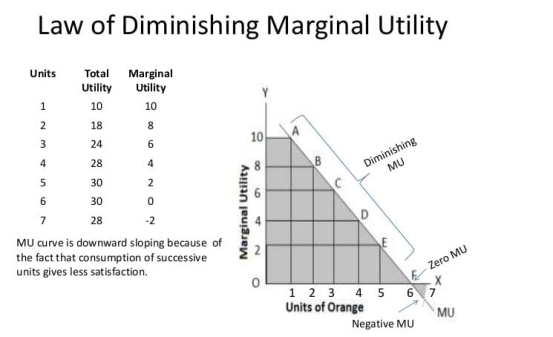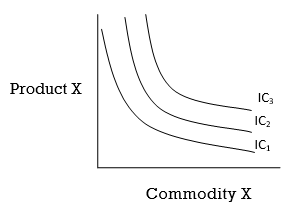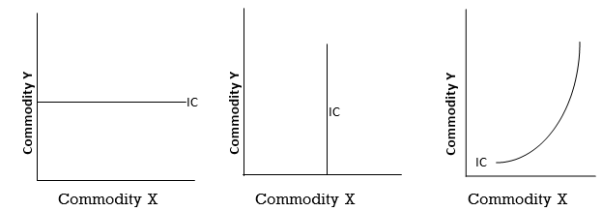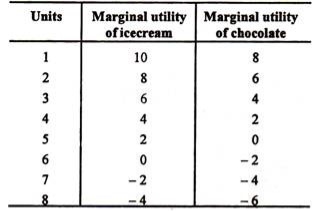Unit - 2
Consumer Behavior
Consumer behavior is about the approach of how people buy and goods and services of use. Understanding consumer behavior will help business entities become more practical in selling, designing, developing products or services, and all other different initiatives that affect their customers.
Consumerism is the organized form of efforts from different individuals, groups, governments and various related organizations which helps to protect the consumer from unfair practices and to safeguard their rights.

The consumer is regarded as the king of modern marketing. In a market economy, the consumer concept has the highest priority, and every effort is made to promote consumer satisfaction.
However, there might be instances where consumers are generally ignored and sometimes they are being exploited as well. Therefore, consumers come together for protecting their individual interests. It is a peaceful and democratic movement for self-protection against their exploitation. Consumer movement is also referred as consumerism.

Importance of Consumer Behavior
It is very important to understand the behaviour of the customers to achieve the goal of the business. There is various importance of consumer behaviour; some of them are given below:
Production policies
The study of consumer behavior affects business production policies. Consumer behavior discovers, needs, knows, chooses consumers, and this discovery allows the company to plan and deploy products according to these specifications. Every company needs to be in constant contact with changing consumer behavior so that the necessary product changes are made on time.
Price Policy
Consumer behaviour is equally important in having price policy. The buyer only purchases your product, which is cheaper or has distinctive features than your competitor's.
Decision regarding the channel of distribution
An economical distribution channel should be imposed for goods and services which are sold solely based on low price. In the case of such products like T.V. sets, Air Conditioner, etc., must have different distribution channels. Thus, decision-related to the channel of distribution is taken based on consumer behavior.
Decision regarding sales promotion
Consumer behavior plays a vital role in deciding the sales promotion. It enables the producer to motivate and encourage the consumer to make a purchase decision, and the same is used in the promotional campaigns to awaken the desire to purchase the product.
Exploiting marketing opportunities
The study of consumer behaviour helps a marketer identify the needs, wants, desires and problems, etc. of the consumer. This information and knowledge help the marketer exploit market opportunities and meet the challenges in the market.
What is Consumer Demand?
Consumer demand is defined as the willingness and ability of consumers to purchase a quantity of goods and services in a given period of time, or at a given point in time.
Consumers consider various factors before making purchases.
For example, a particular brand, price range, size, features, etc. These factors differ from one individual to the other depending on their income level, standard of living, age, sex, customs, socio-economic backgrounds, tastes and preferences, etc. These factors form the basis for consumer buying behaviour.
Assumptions of Consumer Demand
The study and analysis of consumer behavior is based on three main assumptions, which are listed.
Let us read consumer demand assumptions in details:
1. Decisiveness
It is assumed that a consumer is supposed to be able to declare his own preference or indifference to two different commodities.
Consumers are therefore less ambiguous or confused when deciding between different commodities. This is known as consumer determination.
For example, an individual goes to a fast food restaurant and is asked to opt between pizza and burger. According to the assumption of decisiveness, the individual would act in one of the following ways: Opt for pizza, Opt for burger, Opt for none of the two and walk out.
2. Transitivity
In consumer demand, it is assumed that the preferences of an individual consumer are always consistent. An individual’s preference or indifference for one commodity over another can be applied to another related commodity. Thisis referred to as transitivity. In the above example, if the individual chooses pizza over burger, burger over pasta, then the individual would prefer pizza over pasta too as per the assumption of transitivity.
3. Non-satiation
It is assumed that a consumer is never completely satisfied. If a consumer prefers a commodity, he/she would continue to demand it. This is referred to as non-satiation.
For example, a larger pizza is preferred over a smaller pizza; two dresses are preferred over one; etc. However, non-satiation is not a fundamental assumption as rational consumers get satiated after a certain limit.
Key Takeaways:
What do you mean by utility?
Utility is the amount of satisfaction that results from the consumption of goods or services at any given time. Utility influences consumers on the choice of what to buy and how much to buy.
Types of Utility
This is the total amount of satisfaction that results from the total consumption of a particular product or service at any given time. Total profit increases at a declining rate as consumption increases. In other words, it is subject to the law of declining return. It decreases after an optimal point.
b. Marginal Utility
This is the additional utility obtained -from the consumption of one unit more than one given basic product per unit of time. It is the change in total profit that is carried out by the consumption of an additional unit of the goods at any given time.
Marginal utility decreases as consumption increases. Hence the marginal utility curve tilts down from left to right.
The law of diminishing marginal utility is explained exhaustively by Alfred Marshall. According to its definition of the law of reduction of marginal utility, the following occurs: "During consumption, as more and more units of a product are used, each successive unit gives utility with a decreasing rate, provided that other things remain the same; although, the total utility increases.
Diminishing marginal Utility
“During the course of consumption, as more and more units of a commodity are used, every successive unit gives utility with a diminishing rate, provided other things remaining the same; although, the total utility increases.”
Explanation of the Law of Demand
We can briefly explain Marshall’s theory with the help of an example. Assume that a consumer consumes 6 bananas one after another. The first bananas gives him 20 utils (units for measuring utility). When he consumes the second and third bananas, the marginal utility of each additional bananas will be lesser. This is because with an increase in the consumption of bananas, his desire to consume more bananas falls.
Therefore, this example proves the point that every successive unit of a commodity used gives the utility with the diminishing rate.

In the above graph we can see the graph of law of diminishing marginal utility, which shows that as more goods are consumed, their marginal utility decreases.
This theory is applied more in capitalist societies where the accumulation of goods are common element. Also, it allows identifying marginal utilities that diminish with the passage of time forming utility curves with negative slope.
Example
Suppose a person who does not have shoes to go to work and decides to buy new ones. This person has a positive initial marginal utility. As you wear your shoes you will be buying more and more. Later your degree of satisfaction will be less because of the accumulation of more goods. Therefore, the marginal utility will become constant in time and then become decreasing. In a capitalist society, this theory is very common since society tends to accumulate and oblivion of many goods that are purchased.
Law of equi marginal utility
The law of equi-marginal utility explains the behaviour of a consumer when he consumers more than one commodity. Wants are unlimited but the income which is available to the consumers to satisfy all his wants is limited. This law explains how the consumer spends his limited income on various commodities to get maximum satisfaction. The law of equi-marginal utility is also known as the law of substitution or the law of maximum satisfaction or the principle of proportionality between prices and marginal utility.
If he finds that a rupee spent on one commodity gives him more utility than the same rupee spent on another commodity, he shall continue to spend money on the former till the utilities derived from the last rupee spent on the two commodities are equal.
Suppose chocolates and ice-creams are two purchasable goods. Suppose further that the consumer has Rs. 70 to spend. Let us spend Rs. 30 on ice-creams and Rs. 40 on chocolates. What is the result? The utility of the 3rd unit of ice-creams is 6 and that of the 4th unit of chocolates is 2. As the marginal utility of ice-cream is higher the consumer would buy more of ice-creams and less of chocolates.
Suppose he substitutes one ice-cream for one chocolate so that he buys four ice-creams and three chocolates. Now the marginal utility of both ice-creams and chocolates is the same, i.e., 4. This combination of ice-cream and chocolate yields maximum total utility of satisfaction.
The total utility of 4 ice-creams would be 10 + 8 + 6 + 4 = 28 and of three chocolates 8 + 6 + 4=18 which gives us a total utility of 46. The satisfaction given by 4 ice-creams and 3 chocolates at Rs. 10 each is greater than could be obtained by any other combination of the two goods. For no other combination does this utility amount to 46.
Assumptions
1. The consumer is rational so he wants to get maximum satisfaction.
2. The utility of each commodity is measurable.
3. The marginal utility of money remains constant.
4. The income of the consumer is given.
5. The prices of the commodities are given.
6. The law is based on the law of diminishing marginal utility
Limitations of the law
1. Indivisibility of goods
The theory is weakened by the fact that many commodities like a car, a house etc. are indivisible. In the case of indivisible goods, the law is not applicable.
2. The Marginal Utility of the goods are not constant
The theory is based on the assumption that the marginal utility of money is constant. But that is not really so.
3. The Measurement of Utility is not Possible
Marshall states that the price a consumer is willing to pay for a commodity is equal to its marginal utility. But modern economists argue that, if two persons are paying an equal price for given commodity, it does not mean that both are getting the same level of utility. Thus utility is a subjective concept, which cannot be measured, in quantitative terms.
4. Utilities are Interdependent
This law assumes that commodities are independent and therefore their marginal utilities are also independent. But in real life commodities are either substitutes or complements. Their utilities are therefore interdependent.
5. Indefinite Budget Period
According to Prof. K.E. Boulding, indefinite budget period is another difficulty in the law. Normally the budget period is assumed to be a year. But there are certain commodities which are available in several succeeding accounting periods. It is difficult to calculate marginal utility for such commodities.
Key Takeaways:
1. Utility is the amount of satisfaction that results from the consumption of goods or services at any given time. Utility influences consumers on the choice of what to buy and how much to buy.
2. The law of diminishing marginal utility is explained exhaustively by Alfred Marshall
3. According to its definition of the law of reduction of marginal utility, the following occurs: "During consumption, as more and more units of a product are used, each successive unit gives utility with a decreasing rate, provided that other things remain the same; although, the total utility increases.
4. Law of diminishing marginal utility is applied more in capitalist societies where the accumulation of goods are common element.
5. The law of equi-marginal utility explains the behaviour of a consumer when he consumers more than one commodity.
6. The utility of each commodity is measurable.
7. The marginal utility of money remains constant.
8. Normally the budget period is assumed to be a year. But there are certain commodities which are available in several succeeding accounting periods. It is difficult to calculate marginal utility for such commodities
Utility analysis suffers from a flaw in the subjective nature of utility, that is, the inability to measure utility quantitatively and accurately. To overcome this difficulty, economists developed a different approach based on the indifference curve. According to this indifference curve analysis, utility cannot be accurately measured, but the consumer can state which of the combinations of two goods he prefers, without describing the magnitude of the strength of his preference. This means that if the consumer is presented with a number of different combinations of goods, he can order or rank them on a “scale of preference “if the different combinations are marked a, B, C, D, E, etc. In this case, the consumer can tell whether he likes A to B or B to A or is indifferent between them. Similarly, he can show his preference or indifference between other pairs or combinations. The concept of order utility means that consumers cannot go beyond stating their preferences or indifference. In other words, if consumers prefer A to B, they don't know by “how much “they prefer A to B. Consumers cannot state the “quantitative difference “between different satisfaction levels. He can simply compare them “qualitatively". That is, it is possible to determine whether simply one satisfaction is higher than another, or lower, or equal.
The basic tool of the Hicks-Allen order analysis of demand is the indifference curve, which represents all those combinations of goods that give the consumer the same satisfaction. In other words, all the combinations of goods that lie on the consumer's indifference curve are equally preferred by him. The independence curve is also known as the Iso-utility curve. Indifferent schedules are tabular statements showing different combinations of two goods that bring the same level of satisfaction.
Table: Indifference schedule
Combination Rice (X) Wheat (Y)


I | 1 | 12 |
II | 2 | 8 |
III | 3 | 5 |
IV | 4 | 3 |
V | 5 | 2 |
Now consumers are asked to tell the amount of wheat (Y) they are willing to give up the benefit of an additional unit of rice (X) so that the level of satisfaction remains the same. If the profit of one unit of rice fully compensates for the loss of 4 units of wheat, then the following combination of 2 units of rice
And eight units of wheat will give him as much
Satisfaction as the first or first combination. A set of indifferent curves representing the size of preference at different levels of satisfaction are understood because the indifferent curve map (figure 2.3).
Although the combination lying on the indifferent curve 3 (IC3) provides the same satisfaction

Figure: Indifference curve map
The level of satisfaction in the indifference curve 3 (IC3) is greater than the level of
Satisfaction with indifference curve 2(IC2).
I) the nature of the indifference curve
A) Downward inclination: the indifference curve tilts downwards from left to right.
This means that when the amount of one good in a combination increases, the amount of another must necessarily be reduced so that the total satisfaction is constant.
If the indifference curve is a horizontal straight line (parallel to the X-axis), then the indifference curve is a horizontal straight line (parallel to the X-axis), as shown in the figure. 2.4 (a) means that as the amount of good X increases, the amount of good Y will remain constant, but the consumer will remain in different among the various combinations. This cannot be done, because consumers always prefer a large amount of good to a small amount of its good. Similarly, the indifference curve cannot be a vertical straight line


Fig. (a) Horizontal (b) Vertical (c) Upward Sloping
A vertical straight line means that while the amount of good y in combination increases the amount of good X remains constant. The third possibility for the curve is to lean upward to the right.
Key Takeaways:
The revealed preference theory suggests that you simply can determine what consumers' preferences are by watching what they're buying during a range of circumstances, especially in several price and income scenarios. What we want is revealed by what we do, rather than what we say - actions speak louder than words - so the theory says.
When making a purchase, as consumers, we had considered a set of alternatives beforehand, revealed preference theory suggests. Therefore, given that we chose one option out of a set, whatever we chose has to be the preferred option.
Example of Revealed Preference
As an example of the relationships expounded upon in revealed preference theory, consider consumer Y that purchases a pound of grapes. It is assumed under revealed preference theory that consumer Y prefers that pound of grapes above all other items that cost the same, or are cheaper than, that pound of grapes. Since consumer Y prefers that pound of grapes over all other items they can afford, they will only purchase something other than that pound of grapes if the pound of grapes becomes unaffordable. If the pound of grapes becomes unaffordable, consumer Y will then move on to a less preferable substitute item.
Key Takeaways:
References:
1. “Modern Micro Economics”, Koutsoyiannis.
2. “Fundamentals of Engineering Economics”, Park, Prentice Hall.
3. “Economics”, Samuelson.
4. “Growth Economics”, Sen A.K, Penguin Books, England.
